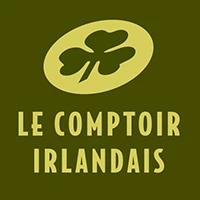herbal tea plants
| Hibiscus or roselle |
This yearly shrub is also called “Guinea sorrel”. Flower petals fall down revealing sepals, developing into delicious fruits. Use Fruits give a burgundy colour and acid taste to jellies, sauces, wines and herbal teas. They are also used in marmalades. Their astringent properties make them good for healing wounds or soothing a cough. Fermented young fruit juice may be added to rum. Dried petals are used against fever and tapeworm. The phloem gives a strong fibre looking like jute. Note Pink China Hibiscus flowers give a red colour to herbal teas and polish. Petal juice is used as mascara by Chinese women. In South-east Asia, this plant is used as medicine. Hibiscus or Karkadé is a yearly plant originating from central Africa which has then been imported to every tropical region. The straight stem, quite ramified at the base, may reach 2 meters high. This Malvaceae with mucilage is a cousin of fibre Malvaceae (like cotton). Leaves are full, egg-shaped at the base, webbed with three leaflets along the stem. Flowers are almost sessile to the axils of the leaves, with red petals on a fleshy red or green chalice. Hummingbirds drink the nectar of these beautiful flowers and pollinate them at the same time. |
Flowers are used, and especially young chalices harvested when leaves are fully mature. After drying, they turn to black red, and become brittle and thick. The brew obtained with hibiscus flowers is traditionally served for tea in Egypt, as it is the national drink. In the past ten years, this drink has become more and more popular in France, as it might have been brought back by tourists. This garnet-red acidulous drink may be consumed cold or hot, sometimes mixed with other herbs. Hibiscus flowers may also garnish salads. This plant has also been selected by home gardeners for the beauty of its flower. |
Dog Rose and Rosehips |
Rosehips blossom in autumn on the nude palm of this wild rose bush that grows alongside pathways in the countryside, forming impenetrable thorny hedges protecting birds and nests. Unfortunately, this exquisite plant was not named after the birds as it has been called “dog rose”, or Rosa Canina. Indeed, in ancient times, dog rose root was an alleged cure of rabies carried by dogs. Flowers blossom in May and June. Brewed in herbal teas, they have a slight laxative effect provided by leaves. Fruits are harvested when fully ripe, after autumn’s first frosts. They must be harvested quickly as these glossy berries are very appealing to birds. They are used in herbal teas but also marmalades. This herbal tea is a good tonic, diuretic and also a good cure for diarrhoea. Extremely rich in vitamin C, it improves infectious disease resistance. To prepare your herbal tea, crush 50g of rosehips and boil them in one litre of water for at least 10 minutes. You may mix rosehips and hibiscus, as the two flavours get along well. |
Vermillion rosehips rise from fallen dog rose flowers in autumn. Rosehips are olive-shaped with a nice orange-red colour when ripe. The inside is full of small bristle or fur in which are inserted the seeds. Rosehips were nicknamed after this bristle as “itching powder”, which must be removed before consumption. Rosehips are exceptionally rich in sugar, glucose, saccharine and especially vitamin C. They contain carotenoids (derived from Vitamin A), tannins, flavonoids and fibres (pectin). They may be consumed raw if one likes the acid taste, or may be used for marmalades, recommended for babies as it is full of vitamins and increases diarrhoea resistance. Rosehips have astringent, diuretic, anti-scurvy properties and may be used against diarrhoea, nausea, stomach cramps, kidney stones, inflammations and diseases. |
| Back to homepage |

 Hibiscus Sabdariffa is a shrub of the Mavaceae family like cotton.
Hibiscus Sabdariffa is a shrub of the Mavaceae family like cotton.




